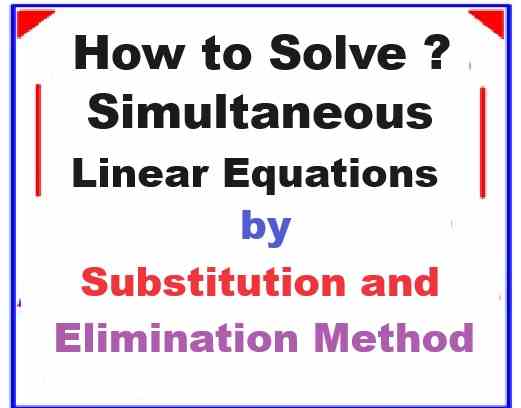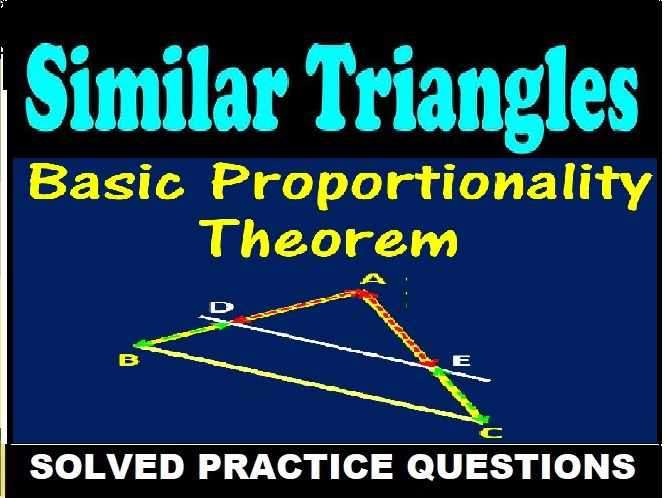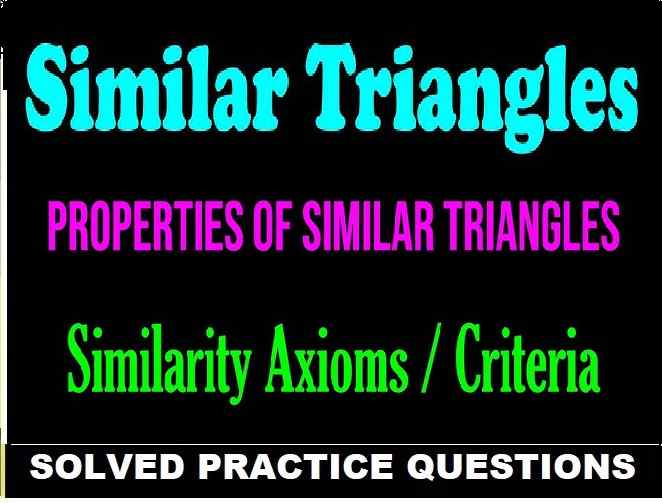Simultaneous Linear Equations Class 9 RS Aggarwal Exe-5A Goyal Brothers ICSE Maths Solutions Ch-5. In this article you will learn how to solve Simultaneous Linear Equations one variable easily. Visit official Website CISCE for detail information about ICSE Board Class-9

Simultaneous Linear Equations Class 9 RS Aggarwal Exe-5A Goyal Brothers ICSE Maths Solutions Ch-5
| Board | ICSE |
| Subject | Maths |
| Class | 9th |
| Chapter-5 | Simultaneous Linear equations |
| Writer | RS Aggrawal |
| Topics | Solving by Substitution and Elimination Method |
| Academic Session | 2024-2025 |
Solving Simultaneous Linear Equations
There are many way to solve such equation such as Graph method, Criss- cross method, Substitution method and Elimination Method.
Substitution Method:
Solve one of the equations for one of the variables. and then Substitute that expression into the remaining equation. The result will be a linear equation with one variable that can be solved.
Elimination Method:
- Choose a variable to eliminate.
- Find the LCM of the coefficients of that variable.
- Multiply both the given equations by some suitable non-zero constants to make the coefficients of any one of the variables (either x or y) numerically equal.
- After that, add or subtract one equation from the other in such a way that one variable gets eliminated
Page- 72
Exercise- 5A
(Simultaneous Linear Equations Class 9 RS Aggarwal Goyal Brothers ICSE Maths Solutions Ch-5)
Solve the following simultaneous equations :
Que-1: x+2y=1, 3x-y=17
Sol: Given Equation is x + 2y = 1 —— (1)
Given Equation is 3x – y = 17 —— (2)
On Multiplying equation (1) * 3, we get
= > 3x + 6y = 3 —– (3)
Now, On solving (2) & (3), we get
= > 3x + 6y = 3
= > 3x – y = 17
7y = -14
y = -2.
Substitute y = -2 in (2), we get
= > 3x – y = 17
= > 3x – (-2) = 17
= > 3x + 2 = 17
= > 3x = 17 – 2
= > 3x = 15
= > x = 5.
Que-2: 5x+4y=4, x-12y=20
Sol: 5x + 4y = 4 ……. (1)
X – 12y = 20 ……….(2)
x = 20 + 12y ………. (3)
substituting the value of x in Eq (1)
5(20 + 12y) + 4y = 4
100 + 60y + 4y = 4
64y = 4-100
y = -96/64
y = -3/2 or -1.5
Substituting the value of y in Eq (2)
x – 12(-3)/2 = 20 (12 is divided by 2 giving six in next step)
x – 6(-3) = 20
X + 18 = 20
x = 20 – 18
x = 2.
Que-3: x+2y+9=0, 3x+4y+17=0
Sol: x + 2y = – 9 … (1)
3x + 4y = – 17 … (2)
Multiply (1) by 3:
→ 3(x + 2y) = (-9)3
→ 3x + 6y = – 27… (3)
(3) – (2):
→ (3x + 6y) – (3x + 4y) = – 27 – (-17)
→ 2y = – 27 + 17 = – 10
→ y = (-10/2) = – 5
Putting the value of y in 1equation,
x + 2(-5) = -9
x = 10 – 9 = 1
Therefore, x = 1 & y = – 5.
Que-4: 10x+3y=75, 6x-5y=11
Sol: The given equations are
10x+3y=75 … (i)
6x−5y=11 … (ii)
Multiplying (i) by 5 and (ii) by 3, we get
50x+15y = 375 … (iii)
18x−15y = 33 … (iv)
Adding (iii) and (iv), we get
68×408 ⇒ x = 40868 ⇒ x = 6.
Putting x=6 in (i), we get
(10×6)+3y = 75
⇒ 60+3y = 75
∴ x = 6, y = 5.
Que-5: 7x-2y=20, 11x+15y=0
Sol: Consider the given equations.
7x−2y=20 ………(1)
11x+15y=−23 ……..(2)
From equation (1), we get
⇒ y = (7x−20)/2
On putting value of y in equation (2), we get
⇒ 11x+15[(7x−20)/2] = −23
⇒ 11x+(105x/2)−150 = −23
⇒ (127x/2) = 127
⇒ x = 2
Therefore,
⇒ y = 7×2−202
⇒ y = −3
Hence, the value of x and y is 2,−3.
Que-6: (7-4x)/3=y, 2x+3y+1=0
Sol: [(7-4x)/3] = y
⇒ 4x + 3y = 7 ……..(i)
and 2x + 3y + 1 = 0
⇒2x + 3y = -1 ……….(ii)
On subtracting (ii) from (i), we get:
2x = 8
⇒x = 4
On substituting x = 4 in (i), we get:
16x + 3y = 7
⇒3y = (7 – 16) = -9
⇒y = -3
Hence, the solution is x = 4 and y = -3.
Que-7: 4x-3y=8, 18x-3y=29
Sol: 4x – 3y = 8 ………. 1
18x – 3y = 29……….. 2
subtract eq(2) by eq(1)
-14x = -21
x= 21/14
x = 3/2
substitute x value in eqn 1
4 (3/2) – 3y = 8
6 – 3y = 8
-3y = 8-6
y = – 2/3
Que-8: (x+y-8)/2 = (x+2y-14)/3 = (3x+y-12)/11
Sol: (x+y-8)/2 = (x+2y-14)/3 = (3x+y-12)/11
(x+y-8)/2 = (3x+y-12)/11
By cross multiplication, we get:
11x + 11y – 88 = 6x + 2y – 24
⇒11x – 6x + 11y – 2y = -24 + 88
⇒5x + 9y = 64 …….(i)
and (x+2y-14)/3 = (3x+y-12)/11
⇒11x + 22y – 154 = 9x + 3y – 36
⇒11x – 9x + 22y – 3y = -36 + 154
⇒2x + 19y = 118 …….(ii)
On multiplying (i) by 19 and (ii) by 9, we get:
95x + 171y = 1216 ……(iii)
18x + 171y = 1062 ……(iv)
On subtracting (iv) from (iii), we get:
77x = 154
⇒x = 2
On substituting x = 2 in (i), we get:
10 + 9y = 64
⇒9y = (64 – 10) = 54
⇒y = 6
Hence, the solution is x = 2 and y = 6.
Que-9: (x/7)+(y/3)=5, (x/2)-(y/9)=6
Sol: (x/7) + (y/3) = 5 and (x/2) − (y/9) = 6
⇒ [(3x+7y)/21] = 5 and ⇒ [(9x−2y)/18] = 6
⇒ 3x+7y = 105 ………(i) and
9x−2y = 108 ……… (ii)
From 3×eq(i) − eq(ii)
⇒ 9x+21y − 9x+2y = 315−108
⇒ 23y = 207
⇒ y = 207/23
∴y = 9
Substitute y = 9 in equation(i), we get
3x+7(9) = 105
⇒ 3x+63 = 105
⇒ 3x = 105−63
⇒ 3x = 42
⇒ x = 42/3
⇒ x = 14
Hence, the value of x and y is x = 14, y = 9.
Que-10: (x/6)+6=y, (3x/4)=1+y
Sol: (x/6)+6 = y, (3x/4) = 1+y
(x/6) = y-6 …….. (i)
(3x/4) = y+1 …….. (ii)
x = 6y-36 …… (iii)
Substitute (iii) eq in (ii) eq
[3(6y-36)/4] = y+1
[(18y-108)/4] = y+1
18y-108 = 4y+4
18y – 4y = 4+108
14y = 112
y = 112/14
y = 8
Substitute y value in (iii) eq
x = 6y-36
x = 6(8)-36
x = 48-36
x = 12
Hence x = 12, y = 8.
Que-11: 4x+[(x-y)/8]=17, x+2y=[(y-2)/3]-2
Sol: 4𝑥+[(𝑥-𝑦)/8] = 17 (Given)
⇒ 32x + x – y = 136
⇒ 33x – y = 136 ……(1)
2𝑦+𝑥-[(5𝑦+2)/3] = 2 (Given)
⇒ 6y + 3x – 5y – 2 = 6
⇒ 3x + y = 8 …….(2)
Adding equations (1) and (2), we get
[33x – y = 136] + [3x + y = 8]
36x = 144
x = 4
Substituting x = 4 in equation (2), We get
3 x 4 + y = 8
⇒ 12 + y = 8
⇒ y = 8 – 12
⇒ y = – 4
∴ Solution is x = 4 and y = – 4
Que-12: (x/2)+y=4/5, x+(y/2)=7/10
Sol: (x/2)+y = 4/5 …… (i)
x+(y/2) = 7/10 …….. (ii)
Multiply by 10 in the eqn(i) and eqn (ii), we have
5x+10y = 8 …. (iii)
10x+5y = 7 …… (iv)
Multiply by 2 in eqn (iiii)
10x+20y = 16 ……… (v)
Subtract eqn (iv) from eqn (v)
(10x+20y) – (10x-5y) = 16-7
15y = 9
y = 9/15
y = 3/5
Put the value of y in eqn (iv)
10x+(3/5)5 = 7
10x+3 = 7
10x = 7-3
x = 4/10 = 2/5.
Que-13: [(7+x)/5]-[(2x-y)/4]=3y-5, [(4x-3)/6]+[(5y-7)/2]=18-5x
Sol: [(7+x)/5]-[(2x-y)/4] = 3y-5
⇒ 4( 7 + x ) – 5( 2x – y ) = 20( 3y – 5 )
⇒ 28 + 4x – 10x + 5y = 60y – 100
⇒ – 6x – 55y = – 128 ……(1)
[(4x-3)/6]+[(5y-7)/2] = 18-5x
⇒ 3(5y – 7) + 4x – 3 = 6( 18 – 5x )
⇒ 15y – 21 + 4x – 3 = 108 – 30x
⇒ 34x + 15y = 132 …….(2)
Multiplying equation (1) by 34 and equation (2) by 6, We get
– 204x – 1870y = – 4352 …..(3)
204x + 90y = 792 ……(4)
Adding equation (3) and (4), We get
– 204x – 1870y = – 4352 …..(3)
+ 204x + 90y = 792
– 1780y = -3560
⇒ y = 2
Substituting y = 2 in equation (1), We get
– 6x – 55 x 2 = – 128
⇒ – 6x – 110 = – 128
⇒ – 6x = – 18
⇒ x = 3
∴ Solution is x = 3 and y = 2.
Que-14: 4x+(6/y)=15, 3x-(4/y)=7
Sol: 4x + (6/𝑦) = 15 …..(1)
3x – (4/𝑦) = 7 …..(2)
Multiplying (1) by 4 and (2) by 6
16x + (24/𝑦) = 60 ….(3)
18x – (24/𝑦) = 42 ….(4)
Adding (3) and (4), We get
16x + 24𝑦 = 60
+ 18x – 24𝑦 = 42
34x = 102
x = 3
Substituting x = 3 in (1), We get
4(3) + (6/𝑦) = 15
⇒ (6/𝑦) = 15 – 12
⇒ y = 6/3 = 2
y = 2.
Que-15: 5x-9=1/y, x+(1/y)=3
Sol: 5x-9 = 1/y …..(i)
x+(1/y) = 3 …….(ii)
from the second equation:
x+(1/y) = 3x
1/y = 3-x
Now substitute 1/y into the first equation:
5x−9 = 3−x
5x+x = 3+9
6x = 12
x = 2
Now substitute x=2 back into the expression for 1/y:
1/y = 3−x
1/y = 3−2
1/y = 1
y = 1
Que-16: (2/x)+(2/3y)=1/6, (3/x)+(2/y)=0
Sol: (2/𝑥)+(2/3𝑦) = 1/6; (3/𝑥)+(2/𝑦) = 0
Let 1/𝑥 = 𝑢 and 1/𝑦 = 𝑣
2𝑢+(2v/3) = 1/6
12𝑢+4𝑣 = 1…….(I)
3𝑢+2𝑣 = 0 …….(II)
Multiply (II) with 2
6𝑢+4𝑣 = 0 …..(III)
(I) – (III)
12𝑢−6𝑢+4𝑣−4𝑣 = 1−0
6𝑢 = 1
⇒ 𝑢 = 1/6
Putting the value of u in II
3×(1/6)+2𝑣 = 0
⇒ (1/2)+2𝑣 = 0
⇒ 𝑣 = −1/4
1/𝑥 = 𝑢
⇒ 𝑥 = 6
1/𝑦 = 𝑣
⇒ 𝑦 = −4
(x,y) = (6, -4)
Que-17: (3/2x)+(2/3y)=5, (5/x)-(3/y)=1
Sol: (5/x)-(3/y) = 1 …….(i)
(3/2x)+(2/3y) = 5 ……..(ii)
Putting 1/x = u and 1/y = v, we get
5u – 3v = 1 …….(iii)
(3u/2)+(2v/3) = 5
(9u+4v)/6 = 5
9u+4v = 30 ….(iv)
On multiplying (iii) by 4 and (iv) by 3, we get:
20u – 12v = 4 ……..(v)
27u + 12v = 90 ……..(vi)
On adding (iv) and (v), we get:
47u = 94 ⇒ u = 2
⇒ 1/𝑥 = 2 ⇒ 𝑥 = 1/2
On substituting x = 12 in (i), we get:
[5/(1/2)] – 3/𝑦 = 1
⇒ 10 – (3/𝑦) = 1
⇒ 3/𝑦 = (10–1) = 9
𝑦 = 3/9 = 1/3
Hence, the required solution is x = 1/2 and 𝑦 = 1/3.
Que-18: x+y=2xy, x-y=6xy
Sol: x + y = 2xy …..(1)
x – y = 6xy ……(2)
Adding equation (1) and (2)
x + y = 2xy
+ x – y = 6xy
2x = 8xy
2 = 8y
y = 14
From (1)
𝑥+(1/4) = 2×(1/4)
1/2𝑥 = -1/4
𝑥 = -1/2
Que-19: [3/(x+y)]+[2/(x-y)]=3, [2/(x+y)]+[3/(x-y)]=11/3
Sol: [3/(x+y)]+[2/(x-y)] = 3
[2/(x+y)]+[3/(x-y)] = 11/3
let 1/x+y be p
1/(x-y) be q
so the eqn is
3p+2q = 3
2p+3q = 11/3
Eliminate the equation
2[3p+2q=3] ————1
3[2p+3q=11/3]———-2
subtract the equation
6p+4q – 6p-9q = 6-11
-5q = -5
q = -5/-5
q = 1
put the value of q in eqn 1
6p+4q = 6
6p+4(1) = 6
6p+4 = 6
6p = 6-4
6p = 2
p = 2/6
p = 1/3
1/(x+y) = p = 1/3
1/(x+y) = 1/3
3 = x+y —–3rd eqn
1/(x-y) = q = 1
1/(x-y) = 1
x-y = 1 —-4th eqn
x = 1+y
put the value of x in eqn 3rd
3 = x+y
3 = 1+y+y
3 = 1+2y
3-1 = 2y
2 = 2y
2/2 = y
y = 1
put the value of y in eqn 4th
x = 1+y
x = 1+1
x = 2
Que-20: [22/(x+y)]+[15/(x-y)]=5, [55/(x+y)]+[40/(x-y)]=13
Sol: [15/(x−y)] + [22/(x+y)] = 5, [40/(x−y)] + [55/(x+y)] = 13
15(x+y)+22(x−y) = 5(x−y)(x+y) …..(1)
40(x+y)+55(x−y) = 13(x−y)(x+y) …..(2)
Divided 1 and 2
[15(x+y)+22(x−y)]/[40(x+y)+55(x−y)] = 5/13
195(x+y)+286(x−y) = 200(x+y)+275(x−y)
5(x+y) = 11(x−y)
5x+5y = 11x−11y
6x = 16y
3x = 8y
put in (1)
x = 8.
y = 3.
Que-21: 103x+51y=617 ……(i), 97x+49y=583 ….(ii)
Sol: The given equations are
103a + 51b = 617 ….(i)
97a + 49b = 583 ….(ii)
Subtracting eqn. (ii) from (i). we get
6a + 2b = 34
⇒ 3a + b = 17 ….[Dividing throughtout by 2] ….(iii)
200a + 100b = 1200
⇒ 2a + b = 12 …[Dividing throughtout by 100] ….(iv)
Subtracting eqn. (iv) from eqn. (iii), we get
a = 5
Substituting the value of an in eqn. (iii), we get
3(5) + b = 17
⇒ 15 + b = 17
⇒ b = 2
Thus, the solution set is (5,2).
Que-22: 23x-29y=98, 29x-23y=110.
Sol: 23x − 29y = 98 ….(1)
29x − 23y = 110 …(2)
Adding (1) and (2), we get
52x − 52y = 208
52 (x-y) =208
⇒x − y = 4 …..(3)
Subtracting (2) from (1), we get
−6x − 6y = −12
⇒x + y = 2 ….(4)
adding (3) and (4), we get
2x = 6
⇒x = 3
Now, from (4), we get
y = −1
Hence, x = 3 and y = -1.
Que-23: (a/x)-(b/y)=0, [(ab²)/x]+[(a²b)/y]=(a²+b²).
Sol: Given equation are (𝑎/𝑥)-(𝑏/𝑦) = 0 and [(𝑎𝑏²)/𝑥]+[(𝑎²𝑏)/𝑦] = 𝑎²+𝑏²
Taking 1/𝑥 = 𝑢 and 1/𝑦 = 𝑣, the above system of equations become
au – bv + 0 = 0
ab²u + a²bv – ( a² + b² ) = 0
By cross-multiplication, we have
[𝑢/{-𝑏×[-(𝑎²+𝑏²)]-𝑎²𝑏×0}] = [-𝑣/{𝑎×[-(𝑎²+𝑏²)]-𝑎𝑏²×0}] = [1/{𝑎×𝑎2𝑏-𝑎𝑏2×(-𝑏)}]
⇒ [𝑢/{𝑏(𝑎²+𝑏²)}] = [-𝑣/{-𝑎(𝑎2+𝑏2)}] = [1/(𝑎³𝑏+𝑎𝑏³)]
⇒ [𝑢/{𝑏(𝑎²+𝑏²)}] = [𝑣/{𝑎(𝑎²+𝑏²)}] = [1/{𝑎𝑏(𝑎²+𝑏²)}]
⇒ and 𝑢 = {𝑏(𝑎²+𝑏²)}/{𝑎𝑏(𝑎²+𝑏²)} and 𝑣 = {𝑎(𝑎²+𝑏²)}/(𝑎𝑏(𝑎²+𝑏²)}
⇒ u = 1/𝑎 and v = 1/𝑏
⇒ and 1/𝑥 = 1/𝑎 and 1/𝑦 = 1/𝑏
⇒ x = a and y = b
Que-24: If 2x+y=32 and 3x+4y=68, find the value of x/y.
Sol: 2x+y = 32 let equation ( 1)
and 3x+4y=68. equation (2)
multiply equation 1 by 4 and equation 2 by 1
we get
8x -4y =128 let equation be 3
and 3x +4y = 68 equation 4
substracting eq 4 from 3
we get
5x =60 so
x = 12
and putting X =12 in eq 1 we get y =8
so x/y = 12/8
x/y = 3/2
Que-25: The sides of an equilateral triangle are (x+3y)cm, (3x+2y-2)cm and [4x (y/2)+1]cm. Find the length of each side.
Sol: Since it is an equilateral triangle, the lengths of the sides are equal
So, x+3y = 3x+2y−2 = 4x+(1y/2)+1
∴ x+3y = 3x+2y−2 ∴ y = 2x−2
2x−y = 2 …(1)
Also, 4x+12y+1 = x+3y
∴ 8x+y+2 = 2x+6y6x+2 = 5y
6x−5y = −2 …(2)
Multiplying eq(1) by 5 we get,
10x−5y = 10 …(3)
Subtracting eq(2) from eq(3) we get,
4x = 12 ⇒ x = 3
∴ y = 2x−2 = 4
The length of one side of equilateral triangle = x+3y = 3+3(4) = 15units
– : End of Simultaneous Linear Equations Class 9 RS Aggarwal Exe-5A Goyal Brothers ICSE Maths :–
Return to : – RS Aggarwal Solutions for ICSE Class-9 Mathematics
Thanks
Please Share with your friends if helpful


